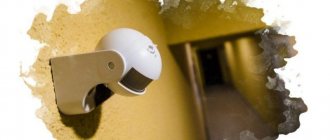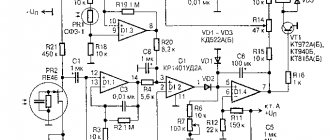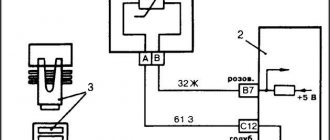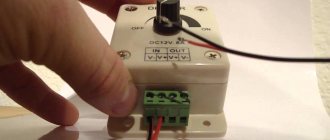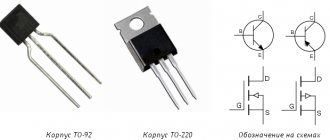A movement sensor is a device that signals the movement of objects in its field of action. It provides control over the observed area and the launch of certain automatic scenarios when triggered - for example, a motion sensor to turn on the light. Such sensors are very common in the field of security, home and business automation, and their use is growing every year. They are found both operating in an independent mode and as part of software and hardware systems.
Types of sensors
Any motion sensor functions by analyzing certain waves received from the outside (radio, sound, thermal and others). According to the principles of operation, devices are divided into:
- ultrasonic;
- infrared motion sensors;
- light (photoelectric);
- tomographic (on radio waves);
- microwave, using microwave radiation.
Gadgets can either simply perceive incoming waves, or generate them themselves and analyze the reflected ones. According to this principle, they are divided into active, passive and combined devices. A combined motion sensor usually has a combined design with separate emitting and receiving modules.
The most common varieties:
- PIR sensors (passive infrared). This is the simplest and most inexpensive option on the market today. They make up about half of the total mass of motion sensors;
- active - tomographic type, microwave motion sensor or ultrasonic;
- combinations of IR and photoelectric.
Manufacturers prefer to combine different types of sensors in one model. This is due to the inevitable errors and false alarms for this class of devices. To increase accuracy and reduce the chances of a “false alarm,” developers combine several technologies (for example, IR and ultrasound) in a single package. This reduces the percentage of fake reactions, but in return sometimes reduces the sensitivity characteristics. Such coarsening can lead to failure to respond to real movement that should be registered.
Depending on the mounting location, the sensors are:
- ceiling;
- wall-mounted
Levels of protection
Depending on the location of installation, devices are divided into external ones, for outdoor installation, and internal ones, for indoor use.
Suitability for certain conditions is determined by the IP protection category. To make the right choice, it is important to understand what the IP degree of security is.
The values of this characteristic are coded with two numbers: the first indicates the degree of protection from dust and other solid objects, the second indicates protection from moisture. For example, the IP20 marking indicates suitability for installation in residential premises and offices. There is no protection from moisture, and the case protects components from objects larger than 12.5 mm. Such a device cannot be installed in the bathroom.
IP44 - more serious protection:
- the housing protects against particles larger than 1 mm;
- protection from splashing water is ensured.
This option is better suited for bathrooms, kitchens, garages and other damp and dirty places. The maximum IP degree in this class of equipment is 65. This is an outdoor option; such devices are capable of operating outdoors at any time of the year, are not afraid of short-term exposure to direct jets of water, and are protected from dust and temperature changes. They are often used as outdoor motion sensors for lighting.
Choosing a location
Installation recommendations
Select a location based on the type of sensor and installation method.
- Ceiling ones are fixed at a height of 2.5–3 m. The range of action is 10–20 m, usually this is enough.
- Wall-mounted ones can be installed inside a building or outdoors. Fixation height is 2–2.5 m. The range of action varies.
Ultrasonic and microwave sensors are most effective if the object is moving towards them. Infrared works better if objects move across the observation area. This is taken into account when placing.
Motion sensor: how it works
Any device in the family under consideration reacts to movement. Let's look at how different types of motion sensors work.
Infrared
Its principle of operation is to analyze the heat entering the working surface. PIR varieties do not generate it themselves, but only register the incoming one.
The infrared device structurally contains two heat-sensitive elements. To ensure proper focusing of the beams, a Fresnel lens is placed in front of each module. The operating principle of a typical PIR device is as follows:
- lenses direct radiation to “their” working module;
- in the absence of movement in the visibility zone, each of them receives approximately the same amount of heat;
- When a thermal object appears, IR rays pass through the lenses to one part of the thermal sensor. The readings between it and the second part begin to differ, and the device “understands” that someone has passed by it.
Of course, the scheme using two lenses is very simple and crude, although it is suitable, for example, for turning on lighting via a sensor in simple cases. Therefore, in reality, each device is equipped with several dozen lenses. Externally, such a module looks like the faceted eye of a dragonfly and is displayed on the body in the form of a cellular window that hides heat-sensitive components.
Pyroelectric elements are mainly used as the latter. Less common are semiconductor versions and microbolometers with thermocouples.
Ultrasonic sensors
These devices analyze the ultrasonic spectrum, which is not perceptible to human hearing. The principle of operation of the motion sensor is as follows:
- a built-in ultrasound generator emits beams of acoustic waves at certain intervals;
- After that, it switches to reception and measures the reflected sound.
If the pattern of the reflected ultrasonic “echo” does not change, there is no movement in the coverage area. When it appears, the Doppler effect distorts the echo and the operating device understands that the situation has changed. If the registered change exceeds the threshold set in the settings, the sensor will be triggered.
The generating ultrasonic unit is usually a quartz or ceramic piezoelectric element; there are samples with a membrane vibrating in an electrostatic field.
Radio wave
The principle of operation of this type of motion sensor is similar to the operation of ultrasonic ones, but it is not the reflected sound that is measured, but the radio signal.
The advantages of radio sensors are their ability to work with areas beyond line of sight. Radio waves are able to overcome non-metallic obstacles such as walls, and such devices can be used to monitor rooms and objects hidden behind obstacles. But a device that responds to radio radiation is expensive, so these devices (like microwave devices) are rarely used in home automation systems, although they have found application in surveillance systems for large commercial areas - workshops, warehouses, and so on.
Photovoltaic
As the name suggests, they respond to light. Their operating principle is to interrupt the beam of incident light. If the device is shaded, it is triggered.
The technical design of a motion sensor of this type is simple; such devices are structurally composed of two parts:
- emitting light waves;
- host.
The latter contains a module for generating current under the influence of radiation. If the flow is blocked, the device will work.
The simplest example of the use of photosensors is in the metro: thanks to them, metro turnstiles work. If a passenger tries to cross the turnstile without paying, the sensor reacts and closes the passage.
Connection diagrams
To solve various problems, motion sensors are connected using various schemes. The simplest option is to directly turn on the lighting fixture, as shown in the figure below.
Rice. 6. Motion sensor connection diagram
If you allow the possibility of switching lighting equipment bypassing the motion sensor for personal needs, then it is better to use a circuit with a bypass function:
Rice. 7. Circuit with bypass switch
As you can see, here the key switch allows you to turn on the lighting even without a signal from the sensor. For those cases when the motion sensor should be triggered only in the dark, a circuit with a photo relay is used:
Rice. 8. Circuit with photo relay
If you want the lighting equipment to be turned on by movement in several zones, then use a diagram for connecting one lamp to two or more sensors:
Rice. 9. Scheme with two motion sensors
Peculiarities
The motion sensor is almost never used “by itself”. In offline mode, it simply detects the occurrence of changes in the controlled area, so it must transmit information about this to related devices or software. And they, in turn, will perform user-specified actions:
- turn on street or interior lighting;
- trigger an alarm;
- send alerts and notifications;
- activate this or that equipment;
- change the parameters of climate control systems and other associated devices.
For example, security motion sensors are almost always included in complex remote control security systems. During installation, specialists configure the connection of the components, and the latter interact through a controller provided and configured by the service provider (private or private security). And the sensor for turning on the light, for example, controls the lighting through the central unit.
If the user is a self-installer and purchases system components separately, he must also purchase, install and configure the appropriate central controller. As a rule, along with this, its supplier provides clients with access to a special cloud service, where connections between components and scenarios for their interaction are configured. This approach is followed, for example, by Xiaomi in its “smart home” ecosystem.
Directional pattern
Proper installation and orientation is critical to ensure maximum performance of the instrument. It was stated above that there is a ceiling and wall installation option; This division in itself does not mean that the ceiling sensor cannot be installed on the wall, or vice versa, but efficiency and accuracy may be reduced.
In addition, before choosing a specific model, you should evaluate the geometry of the space where the gadget will be used and clearly define the planned viewing area. If this is neglected, the device after installation may not “see” movement in the area desired by the owner.
To determine, you should measure the desired viewing angle and the distance at which clear motion detection will be required. Many sensors are equipped with a directional pattern that helps in correct orientation of the device:
Here:
- light area - general viewing area;
- the white dotted line is the area of confident detection.
Adjustment options
After the motion sensor is mounted and secured, you need to configure it. There are rotating elements on the body of the device that allow you to adjust its sensitivity and other parameters. The most commonly used devices are DD type, with a light sensor.
Angle adjustment
Adjusting the motion sensor begins with choosing the angle of inclination.
First of all, especially for those sensors that are installed on walls, you should set the angle of inclination. For this purpose, each sensor has a rotating bracket. The angle is made such that the sensor is triggered under certain conditions. How to do it? It's better to experiment.
As a rule, motion sensors are installed at a height of about 2 and a half meters. Even motion sensors, which are designed for a minimum vertical viewing angle, are capable of monitoring a large area. As mentioned above, experimentally, by changing the angle of inclination, we ensure that the device operates stably within the specified parameters. This often takes a lot of time, but the result is the most optimal.
Adjusting sensitivity
Basically, the adjustments look like this.
Under the knob for this parameter there is the designation “SEN”. In other words, this parameter is intended to prevent the device from reacting to cats and dogs. The device is adjustable from minimum (min) to maximum (max) values.
Setting up this device for this indicator is also carried out experimentally. You can proceed as follows: the device is set to minimum sensitivity and it gradually increases until the device begins to respond to a person. You should stop here and check several times how stable the sensor is. If the sensor is triggered every other time, the sensitivity can be increased. If the sensitivity is increased significantly, then there is a high probability that he will react to animals.
Adjusting the shutdown delay time
Glow time or delay time - choose what you like best.
Under the adjusting element there is the inscription “Time”. The adjustment limits start from 3 seconds and up to 15 minutes, which is achieved by turning the adjusting element. Each model indicates the minimum and maximum delay time. This parameter is also determined experimentally; it is enough to detect the delay time.
Adjustment to light level
Under the adjustment element, this parameter is indicated by the letters “LUX”. Using this adjustment element, the sensitivity of the photo relay is adjusted. If this element is not present, then there is no photocell in the sensor. Adjusting this parameter is not difficult; just set the regulator to the “max” position, and then in the evening, at a certain level of illumination, turn the regulator towards “min” until the sensor is triggered and the light bulb turns off.
220 volt motion sensor to turn on the light. Burning time setting, installation (DIY No. 005)
After such adjustments, the device can be used.
Where is it used?
As already mentioned, the main area of application of motion sensors is home automation, the creation of control and surveillance systems in buildings, and security. Using such sensors you can organize:
- automated lighting through motion sensors to turn on the lights and corresponding controllers/switches;
- control of the climate system by triggers;
- recognition of unauthorized access to premises, and so on.
Devices like these help you save money. Thus, their inclusion in a complex of automatic control of light and air conditioning reduces a company’s or homeowner’s costs for light by 70%, and energy consumption by up to 40%.
Motion sensors are used in:
- aircraft industry;
- defense industry;
- development;
- automotive industry;
- development of consumer electronics, and so on.
Use in security
If such a sensor is included in the remote control complex, when motion is detected, it will turn on the siren and also send an alarm to the dispatcher's console. Having received it, the security organization will be able to send a rapid response team to the site.
If the device operates as part of home security, smart home and similar systems, it will be able to send a notification to the owner via SMS, email or other means. Some solutions can even make calls to one or more “trusted” phone numbers.
We recommend reading: ACS system - what it is, how it helps to increase the security of an object when many people have access to it.
Other possible sensor functions include:
- turning on video surveillance;
- locking the locks on the premises;
- blackout of equipment;
- turning on (or, conversely, turning off) the light;
- any other function that can be implemented by a specific set of hardware and software.
Lighting automation
The sensor can be intended for a street or indoor lighting system. Depending on the location, it is capable of giving commands to turn off the light and turn it on, as well as change the level and color of illumination (with or without a delay).
In general, the sensor sends a signal to the lighting controller, which performs further actions according to the scripts and programs embedded in it, activates switches, and so on. But there are also switches with already built-in sensitive components. They are often used as street motion sensors to turn on lights. And if you add a light sensor to the system, you can further save energy, since the light will not turn on during the day, when it is already light.
Solutions for controlling “smart lamps” and RGB LED strips are common.
Climate systems
Appropriately configured climate control changes power, temperature and other parameters based on a sensor signal. For this:
- the sensor transmits information to the controller about the detected movement (as well as its termination);
- the central unit launches a sequence of commands, including climate control, turning it off or changing modes.
For example, if a signal is received from a room sensor in cold weather, the controller will order the heating thermostats to increase heat to quickly create comfortable conditions. And if there is no movement in the operating area in the summer, the device will force the air conditioner to reduce power.
Manufacturers and prices
In motion devices, the price is directly related to the quality and performance of the device. The more expensive the device, the larger the area it can cover. Among the popular brands it is worth noting devices from the following companies:
- Camelion;
- Theben;
- Ultralight.
The cost of sensors starts from 400 rubles and reaches several thousand. The most rated among budget models according to Yandex.market.
| Image | Model | Viewing angle, degrees | Range, meters | Average price, rubles |
| Camelion LX-39/Wh | 180 | 12 | 558 | |
| Rev 3 | 180 | 12 | 590 | |
| Feron SEN30 (hand motion sensor) | 30 | 5-8 | 759 | |
| PIR16A | 180 | 12 | 505 | |
| IEK LDD12-029-600-001 | 120 | 9 | 508 | |
| Elektrostandard SNS M 02 | 180-360 | 6 | 512 | |
| TDM SQ0324-0014 | 120 | 12 | 519 |
Where to buy sensors
You can purchase motion sensors either in a specialized store or online in an online store. In the second case, the budget option for purchasing products on the Aliexpress website deserves special attention. For some lamps there is an option for shipment from a warehouse in the Russian Federation; they can be received as quickly as possible; to do this, when ordering, select “Delivery from the Russian Federation”
| Infrared motion sensor | KERUI motion sensor | Aqara motion sensor for Xiaomi |
| Motion detector for home alarm | Motion sensor SONOFF SNZB-03 | Microwave Radar Motion Sensor |
Precautionary measures
- MK detectors are not recommended to be installed close to each other, even if there is some kind of obstacle between them. In addition, windows and doors should not fall into their field of observation unless the motion sensor is designed to track movements behind them.
- It is not recommended to install IR detectors near air conditioners, heating radiators and other devices that produce heat.
- Ultrasonic detectors cannot be used in the home if there are pets.
- All installation and repair work on motion detectors should only be carried out by a professional electrician.
- It is not allowed to connect devices with a total power consumption higher than that indicated in the table of permissible values attached to the instructions to motion detectors.
- The cross-section of the wires used must correspond to the switched loads and be at least 1 mm square.

